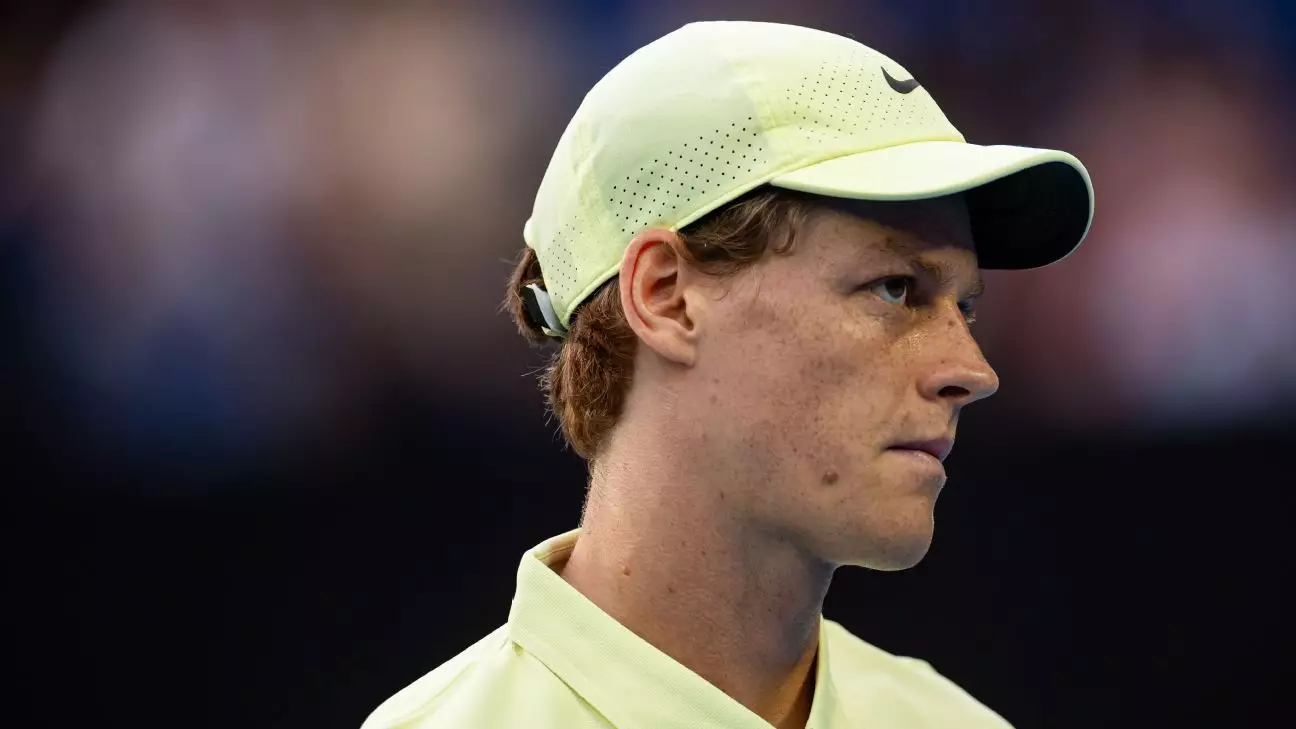Resilience in the Face of Adversity Jannik Sinner’s Return to Tennis
There’s something deeply inspiring about witnessing someone rise above challenges, especially when it involves a beloved athlete like Jannik Sinner. His recent journey through the murky waters of a doping ban has sparked conversations in the tennis world, serving as a testament to resilience and the intricate web of relationships among professional athletes. As he prepares to grace the courts of the Italian Open once more, Sinner’s story is a stark reminder that even the brightest stars face moments of darkness.
Reflecting on Sinner’s experience during his three-month suspension offers a glimpse into the emotional rollercoaster he endured. The support—or lack thereof—from fellow players during this time was surprising to him. While some reached out with words of encouragement, others remained silent, leaving Sinner to navigate this tricky terrain on his own. The emotional toll of feeling isolated amid peers cannot be overlooked. Yet, rather than dwell on who did or didn’t reach out, Sinner chose to focus on the positive messages he received, showcasing his maturity and ability to find light in dark times.
Key Takeaways
- Sinner faced emotional challenges due to varied support from fellow athletes during his doping suspension.
- The doping ban raised questions about current regulations and their impact on athletes’ reputations.
- Support systems, including coaches, play a crucial role in an athlete’s journey back from controversy.
- Sinner’s upcoming matches will test both his technical skills and psychological resilience.
The Cloud of Controversy
The World Anti-Doping Agency’s involvement in Jannik Sinner’s case highlights ongoing debates about doping regulations in sports. Sinner’s ban was primarily due to accidental contamination, raising critical questions about how these rules affect athletes and their reputations. Critics argue that such cases might suggest leniency towards doping, whether intentional or not. This controversy follows Sinner into locker rooms worldwide, where he feels the weight of changed perceptions from fellow players—a reminder that reputation is as fragile as it is vital in competitive sports.
His discomfort during tournaments like the Australian Open underscores how reputational shifts can affect an athlete’s mental state. When players perceive you differently, it can lead to feelings of isolation and self-doubt, regardless of physical ability. These experiences serve as a broader reflection on how personal interaction dynamics shift under scrutiny. Despite these challenges, Sinner remains focused on his game, determined to overcome both internal and external pressures.
The Role of Coaches and Support Systems
Sinner’s return wouldn’t be possible without the steadfast support of his coaching team, led by Simone Vagnozzi and Darren Cahill. These seasoned mentors bring invaluable experience to his journey back into form. However, Cahill’s planned retirement introduces an element of uncertainty about future mentorship for Sinner. Balancing two different coaching perspectives is delicate but essential when handling an athlete emerging from controversy. Vagnozzi’s approach ensures not just technical preparation but also strengthens Sinner’s mental fortitude for upcoming competitions.

Vagnozzi views Sinner not merely as a student but as a formidable contender poised to make significant impacts in tennis. He acknowledges areas needing development—like mastering clay surfaces—but emphasizes building resilience and readiness for what’s ahead. The next few matches will be more than just displays of skill; they’ll be tests of psychological endurance that could redefine Sinner’s career trajectory.
Navigating Social Connections During Suspension
Being barred from competition during his suspension presented unique challenges for Sinner beyond just missing matches; it highlighted how isolation affects athletes mentally and emotionally. Despite wanting to cheer on friends in other sports, restrictions kept him away from events, intensifying feelings of disconnection from his peers. Such experiences remind us that athletes are human too—they crave social connections that foster mental well-being amid demanding careers.
Sinner’s attempts to maintain social ties through digital means show his determination to stay connected despite obstacles. Sharing moments with athletes from various disciplines demonstrates his resilience against adversity while reinforcing essential support networks outside tennis circles. These interactions offer solace and continuity in navigating professional setbacks while preserving personal identity within the sport.
The Road Ahead Embracing Challenges
As Jannik Sinner prepares for his face-off against Mariano Navone at Foro Italico’s red clay courts, anticipation builds—not only about match outcomes but also regarding how he redefines himself post-controversy. With past accomplishments like a 21-match winning streak fueling motivation yet only one clay title among nineteen victories thus far—this tournament represents another turning point—a fresh chapter full potential pitfalls alongside triumphs await discovery under scrutiny’s watchful gaze.

Sinner’s return is laden with expectations mingled with speculations around reclaiming former glory amidst evolving peer dynamics within competitive environments fraught scrutiny self-discovery alike navigated complexities pressures defining both current presence legacy crafted through perseverance resilience embody stories worth sharing celebrating beyond individual achievements shared humanity collective inspiration drawn courageously facing fears embracing unknown futures together stronger united purpose transcending singular moments enriching tapestry sporting history written lived every day anew passion dedication heart soul intertwined inseparable bonded common threads bridging divides uniting across boundaries forging lasting connections transformative journeys resonate deeply inspire generations come shaping brighter tomorrows guided unwavering commitment excellence integrity authenticity true spirit sport life itself perpetual odyssey unfolding before eyes marvel wonder witness unfold sojourns filled promise dreams realized fulfilled beyond imagination limitless possibilities await beckoning ever onward boundless horizons call forth daringly boldly venture forth uncharted territories blaze trails explore discover enrich lives immeasurably profoundly impact futures yet unseen anticipated cherished held dear forevermore etched enduring legacy imprinted hearts minds touched inspired forever changed enriched empowered enlightened pathways chosen traveled embraced wholeheartedly love devotion indomitable spirit triumphs over adversity every step way onward upward reaching soaring heights unimagined attainable achievable reach embrace fullest potential destined greatness awaits discovery fulfillment ultimate calling destiny fulfilled realized anew each moment precious gift cherish honor celebrate together always
“`
[CONTINUE FROM HERE]


Leave a Reply